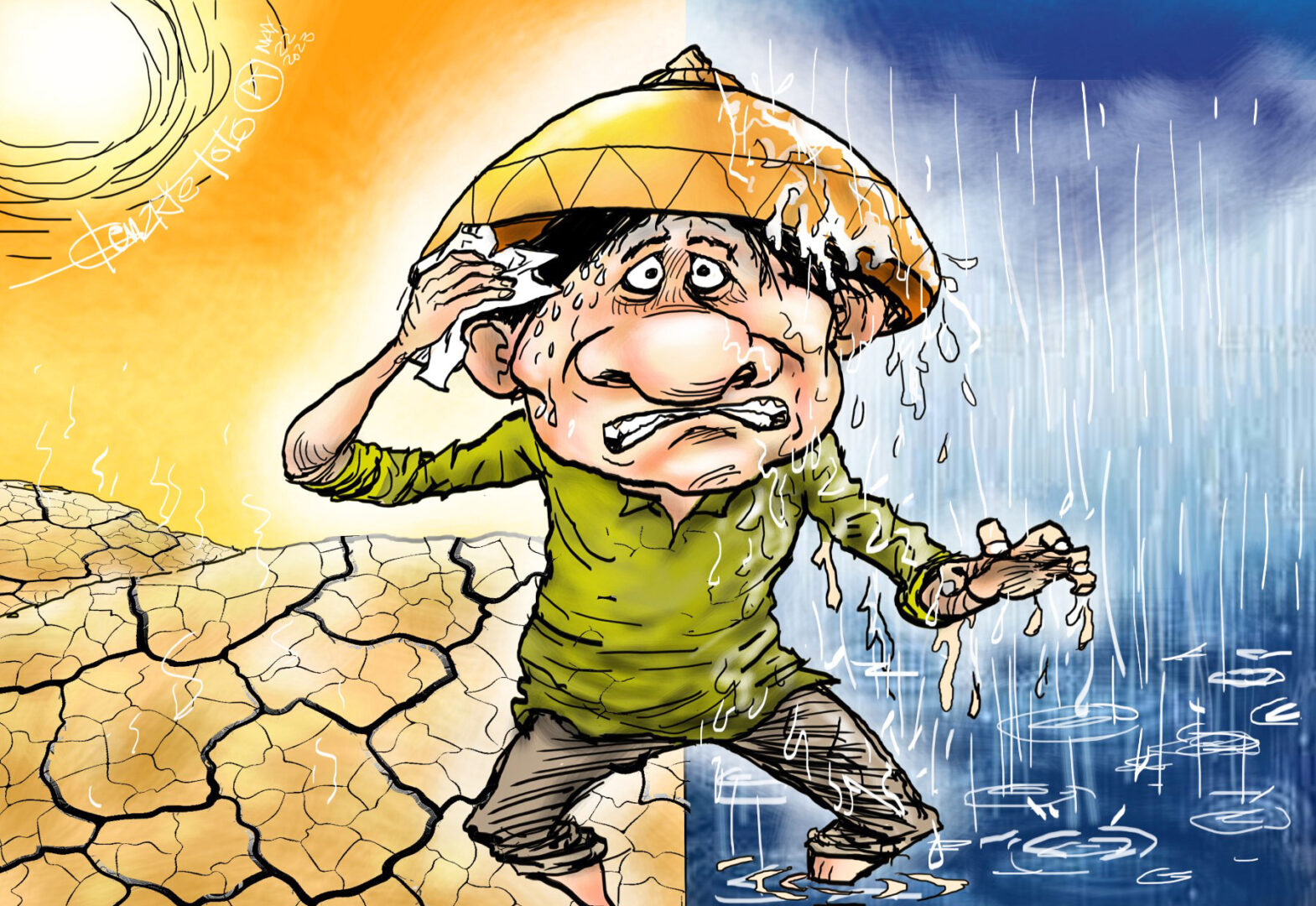President Ferdinand Marcos Jr. over the weekend sounded the alarm that the Philippines will have to brace for the one-two punch coming from the El Niño and La Niña weather phenomena.
Marcos said that despite the severe drought brought about by the El Niño, the country is also preparing for the extreme opposite, of the intense rainfall associated with the La Niña.
The La Nina “brings its own set of problems” like flooding, Marcos said, adding that, “this requires the participation of every Filipino.
For the water shortage presently being felt, the Chief Executive asked the Department of the Interior and Local Government to monitor the compliance of local government units in cracking down against the wasteful use of water.
He cited in particular, “car washes, golf course irrigation and swimming pool refilling” that people may, on their own, limit as their contribution to saving precious water.
Metro Manila mayors, for their part, said this week that they will come up with proposals on how to address the water shortage in the “next week or two,” including the possibility of water rationing.
Being a tropical country, the Philippines is vulnerable to the effects of El Niño and La Niña — the first, a climate pattern that occurs every two to seven years when the Pacific Ocean warms up and touches off droughts and crop failures in unirrigated farmlands.
La Niña is El Niño’s anti-thesis, occurring when the Pacific Ocean cools down, leading to extended rainfalls, floods and, consequently, landslides.
Marcos’ plea for Filipinos to do their best in easing the effects of both weather conditions is not to be taken lightly as the Philippines has experienced both El Niño and La Niña in recent years.
In 2015, the country had a severe El Niño event, along with countries like Australia, Indonesia and Africa, that led to widespread droughts, crop failures, food shortages and price increases.
Five years later in 2020, the Philippines experienced a La Niña event that led to widespread flooding and landslides. This resulted in the deaths of hundreds of people, and it also caused billions of pesos in damage.
True enough, the effects of El Niño and La Niña are not evenly distributed around the world. Still, such events are becoming more frequent and intense due to climate change, experts agree.
For example, Australia is particularly vulnerable to droughts caused by El Niño, while Bangladesh is particularly vulnerable to floods caused by La Niña.
As El Niño and La Niña are not going away, countries like the Philippines have no choice but to apply measures to mitigate their effects, including investing in renewable energy, diversifying the agricultural sector, improving water management, and building climate change-resilient infrastructures.
Renewable energy sources, such as solar and wind power, are not affected by El Niño and La Niña. By investing in them, the Philippines can reduce its reliance on fossil fuels, which are more vulnerable to the effects of climate change.
Likewise, the Philippines, being heavily reliant on rice production, which is a water-intensive crop, needs to diversify its agricultural sector to make its food supply more resilient to climate change.
Improving water management needs no explanation and it is something that can be done by all sectors and individuals. Not so when it comes to building climate-resilient infrastructure, an undertaking that needs government support and guidance.
Here, they may be a need to revise the country’s Building Code to build structures that are resilient to floods, landslides, and typhoons.
As the Philippines braces for El Niño and La Niña, it is important for the government and the people to work together to mitigate the effects of these climate patterns.
By doing so, the country can build a more resilient future and protect its people from the impacts of climate change.
